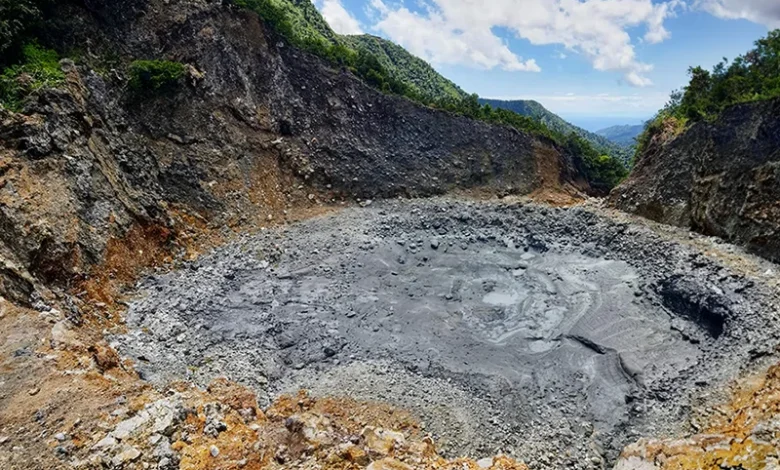Dominica’s Volcanic Landscape

Dominica’s volcanic landscapes define much of the island’s geological features and ecological richness, with nine active volcanic centers concentrated in a relatively small area, giving it the highest density of active volcanoes in the Caribbean. The main volcanic centers on the island are Morne Diablotin, Morne Trois Pitons, Morne Anglais, Morne Watt, Grande Soufriere Hills, Morne aux Diables, Morne Plat Pays, the Wotten Waven Caldera, and the Valley of Desolation. These formations create Dominica’s rugged landscape of steep mountains, lush valleys, and dynamic geothermal features, shaping the island’s terrain and influencing its ecosystems.
Volcanic Landscape Formation and Activity
Dominica’s Volcanic Landscape is a history rooted in the tectonic subduction along the Lesser Antilles volcanic arc. Here, the Atlantic plate moves beneath the Caribbean plate, causing magma to rise to the surface and form the volcanic centers seen today. These centers are marked by various formations, including towering lava domes and expansive pyroclastic flow deposits, which bear evidence of significant historical eruptions. Morne Diablotins, Dominica’s highest peak at over 4,700 feet, is known for its ancient lava domes and extensive ignimbrite deposits—evidence of explosive eruptions dating back over 40,000 years.
Several of Dominica’s volcanic centers remain geothermally active, particularly in areas like Morne Watt and Wotten Waven, where steam vents and hot springs showcase the island’s geothermal activity. These geothermal sites are most concentrated around the Valley of Desolation, where sulfur vents and hot springs release volcanic gases into the air. This region also hosts Dominica’s renowned Boiling Lake, a rare flooded fumarole heated to near-boiling temperatures by volcanic gases. As one of only two such lakes globally, it is a unique geological wonder and a significant visitor attraction.
Unique Volcanic Features and Ecosystems
Dominica’s volcanic features also play a crucial role in sustaining the island’s rich biodiversity. The highly fertile volcanic soil supports diverse plant life within the island’s dense rainforests. Dominica’s Morne Trois Pitons National Park, a UNESCO World Heritage site, is home to many of these species and notable volcanic formations. This park offers trails that lead to various geothermal sites, including the Boiling Lake and waterfalls like Trafalgar Falls and Middleham Falls which emerge from the island’s volcanic terrain and attract both eco-tourists and researchers interested in volcanic and biological interactions.
Dominica’s rivers and streams, fed by high rainfall and volcanic springs, further enrich its ecosystems. The island’s hydrology is closely linked to its volcanic structure, as rivers like the Layou and Roseau carve through volcanic valleys, forming deep gorges and natural pools. This network of waterways is essential for local agriculture and provides a source of hydroelectric power. Water flows from volcanic springs throughout the island, adding to the distinctive mineral composition that shapes Dominica’s plant and animal habitats.
Risks and Future Volcanic Activity
Dominica’s volcanic landscapes also pose hazards, as seismic and volcanic activity are continuous concerns. Earthquake swarms are common, particularly near Morne Plat Pays and Morne aux Diables, where tectonic stress and magma movement have been recorded. The Wotten Waven Caldera, located near Dominica’s capital, Roseau, is considered a significant risk due to its pyroclastic flow deposits extending into populated areas. Scientists monitor seismic patterns on the island to predict potential volcanic events, with some estimating a possibility of future eruptions within the next century.
Dominica’s unique volcanic activity provides both ecological advantages and geological challenges, contributing significantly to its rich natural heritage. The island’s natural hot springs and geothermal features attract thousands of visitors annually and play a crucial role in sustainable tourism. Dominica’s diverse ecology, including its lush montane forests, highlights the balance of conserving natural wonders while prioritizing safety and environmental protection. Through dedicated conservation efforts, Dominica ensures that its volcanic landscapes benefit local communities and preserve its natural environment.




